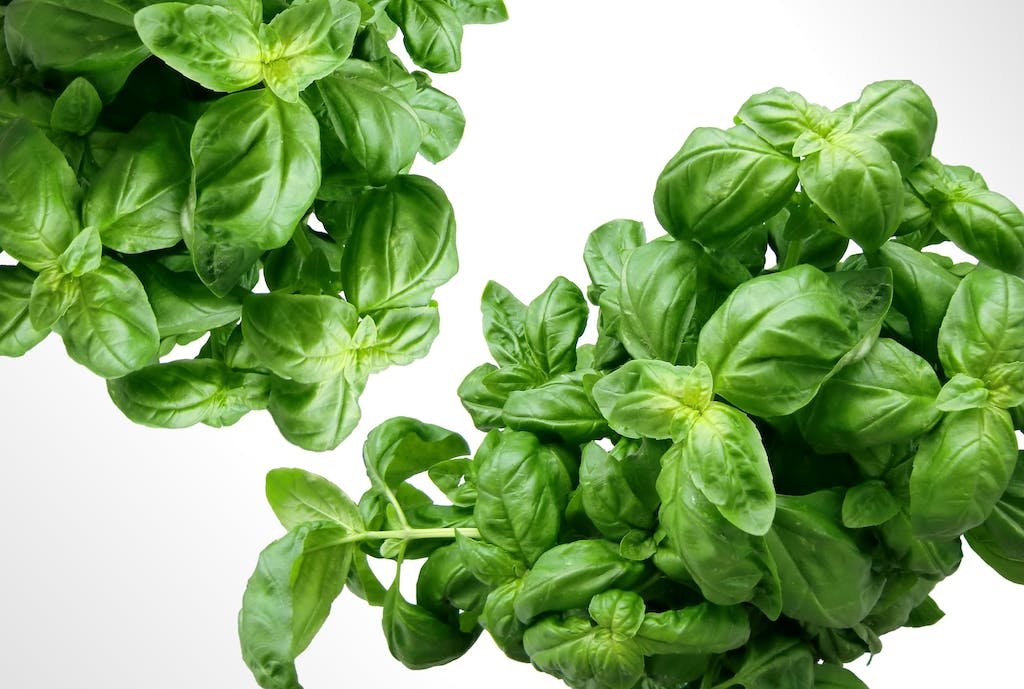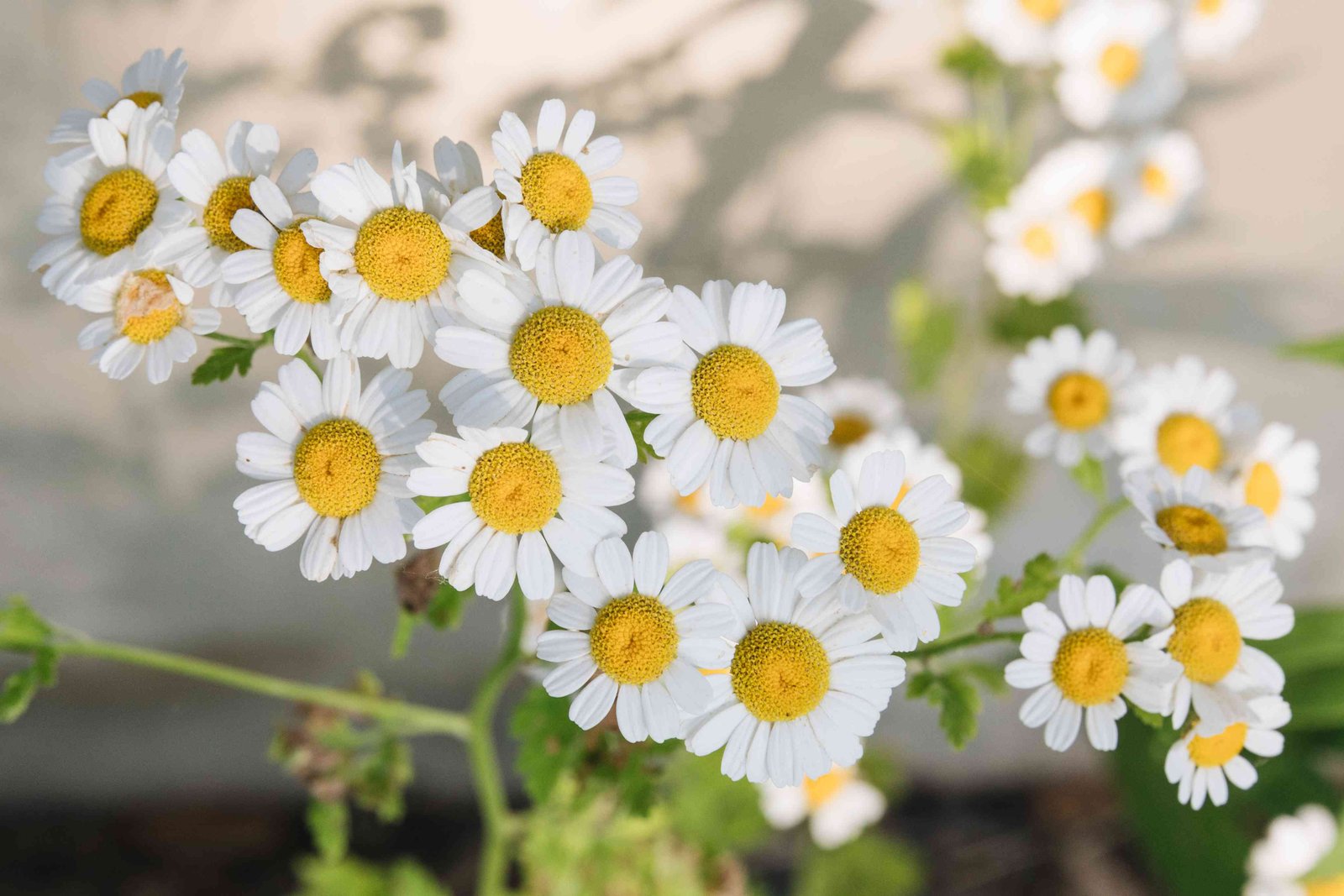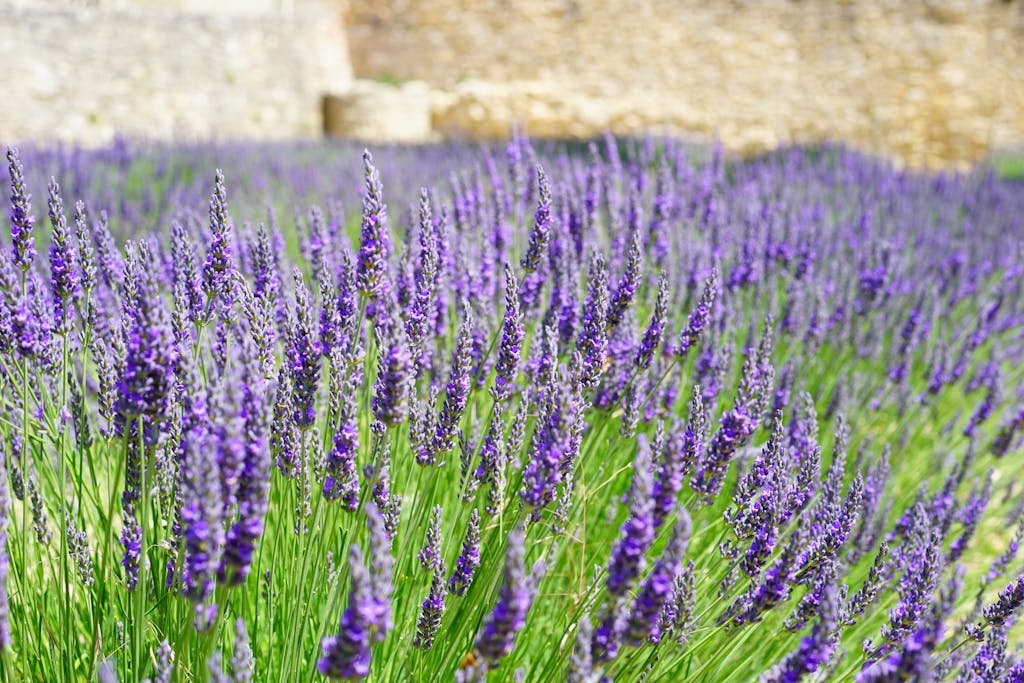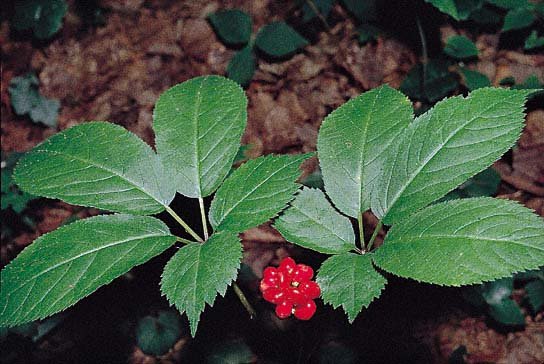Basil (Ocimum basilicum)
Basil, or Ocimum basilicum, isn’t just an herb; it’s a cornerstone of culinary traditions around the globe. Known for its aromatic leaves, basil elevates dishes with its unique flavor profile, blending sweet and savory with a hint of spice. It’s a must-have in kitchens, from Italian pestos to Thai curries, showcasing its versatility across various cuisines.
Beyond its culinary uses, basil’s rich history and potential health benefits make it a fascinating subject. It’s been revered for centuries, not just for its taste but also for its medicinal properties. Gardeners love it for its ease of growth and the vibrant touch it adds to herb gardens. As we dive deeper into the world of basil, we’ll uncover why this herb continues to captivate chefs, gardeners, and health enthusiasts alike.
Key Takeaways
- Basil (Ocimum basilicum) is a versatile herb embraced globally for its aromatic leaves that enhance a wide range of dishes, from Italian pestos to Thai curries, demonstrating its culinary significance and adaptability across different cuisines.
- Beyond its use in cooking, basil has a rich history and is noted for its medicinal properties, revered in various cultures for centuries, fulfilling roles in traditional treatments, rituals, and spiritual practices.
- There are over 60 varieties of basil, each with distinct flavors and uses in cooking, ranging from sweet basil essential in pesto to Thai basil in stir-fries, showcasing the herb’s vast culinary applications and its importance in global gastronomy.
- Growing basil is accessible and rewarding, offering aromatic and flavorful leaves for the kitchen with basic garden care, emphasizing the plant’s appeal to gardeners for both its ease of cultivation and its utility in fresh cooking.
- Basil offers various health benefits, including anti-inflammatory, antioxidant, and antibacterial properties, making it a focus of scientific interest and a valuable addition to a diet for those seeking foods with nutritional and health-promoting qualities.
History of Basil
Basil, scientifically known as Ocimum basilicum, has a rich and storied history that traces back thousands of years. This beloved herb, synonymous with flavor-packed dishes around the globe, holds a place of reverence in numerous cultures due to both its culinary and medicinal properties.
The origins of basil can be traced back to Asia and Africa. Historians suggest that it was first domesticated in India, where it was not only used in cooking but also cherished for its healing properties. Ancient texts, including those of Ayurveda, the traditional Indian system of medicine, detail the use of basil in treatments, highlighting its importance in early medical practices.
In Ancient Egypt, basil was involved in embalming and preserving the dead, suggesting its significance extended well beyond culinary uses to rituals and spiritual practices. Its name is thought to come from the Greek word “basilikon,” meaning “royal,” underlining the esteem in which it was held. This noble connotation underscores the herb’s value in ancient societies, where it was often associated with love and death, weaving it into a tapestry of folklore and tradition.
The journey of basil from the ancient world to Europe is a testament to the herb’s adaptability and allure. It was brought to the Mediterranean through the spice routes that connected the East and West. In Europe, basil found a new home, particularly in Italy and France, where it became integral to their cuisines. Pesto in Italy and pistou in France are just two examples of basil’s central role in European culinary traditions.
Scholars have uncovered evidence of basil in these regions that dates back to the 16th century, but its popularity surged in the 18th and 19th centuries as European trade expanded. Its introduction to the Americas followed European colonization, where it quickly became established as a culinary staple.
Today, basil is revered not only for its flavorful contribution to dishes but also for its potential health benefits. Research suggests that basil may offer antioxidant, anti-inflammatory, and antibacterial properties, making it the subject of scientific interest in the modern era.
As basil continues to be a focal point in culinary, medicinal, and cultural practices around the world, its history remains a fundamental aspect of its enduring appeal.
Culinary uses of Basil
Basil, Ocimum basilicum, stands as a cornerstone in culinary tradition across the globe, its versatility and aromatic quality enhancing a myriad of dishes. This herb is not merely a flavor enhancer but also carries a heritage that dates back millennia, intertwining with cultures that have long celebrated its rich flavor profile and potential health benefits.
In Italian cuisine, basil is almost synonymous with pesto, a vibrant green sauce originating from Genoa. The classic Genovese pesto is a blend of fresh basil leaves, pine nuts, Parmesan cheese, garlic, and high-quality olive oil. This concoction not only elevates pasta dishes but also serves as a delightful spread or a dressing that enriches the flavor of salads and sandwiches.
Moving eastward, Thai cuisine showcases basil in a different light, with varieties like Thai basil playing key roles in dishes such as Pad Kra Pao (stir-fried meat with holy basil). Here, basil adds a peppery sweetness that complements the heat from Thai chilies and the umami from soy and fish sauces. The fusion of basil in these meals underscores its adaptability to blend with diverse cultural palates.
Furthermore, in Mediterranean regions, basil garnishes pizzas, is stirred into soups and stews, and sprinkles over fresh salads. Notably, a simple yet sublime combination of basil leaves, ripe tomatoes, fresh mozzarella, a drizzle of olive oil, and a dash of salt creates the classic Caprese salad, emblematic of the Mediterranean’s love affair with this herb.
Scientific research underscores basil’s healthful properties, including its antioxidant, anti-inflammatory, and antibacterial effects, making its culinary uses even more appealing. Studies suggest that integrating basil into one’s diet could contribute to improved wellness, aligning with the modern pursuit of foods that are both nutritious and flavorful.
While the culinary uses of basil are extensive, its application doesn’t end at the kitchen’s edge. The herb’s aromatic quality lends itself to infused oils, vinegars, and even cocktails, demonstrating basil’s extraordinary flexibility and enduring appeal in the culinary world.
Varieties of Basil
Basil (Ocimum basilicum), with its lush green leaves and aromatic flavor, is not a one-size-fits-all herb. This versatile plant boasts over 60 varieties, each bringing its unique taste and fragrance to the table. Sweet basil is perhaps the most recognized, pivotal in Italian dishes like pesto. However, the basil family extends far beyond this well-loved variant.
Thai basil, with its licorice-like aroma, is a staple in Southeast Asian cuisine. It’s distinguished by its pointed leaves and purple stems, adding a peppery sweetness to spicy dishes. Lemon basil, as its name suggests, exudes citrus notes, transforming fish dishes and herbal teas with its zesty flavor.
For those who relish in unique culinary experiences, cinnamon basil delivers with its spicy, cinnamon-like taste, ideal for adding a twist to desserts and cocktails. Meanwhile, purple basil not just captivates the eyes with its deep violet leaves but also dishes out a milder flavor perfect for decorative uses.
In the realm of health and wellness, recent research points to basil’s array of benefits. Whether it’s sweet or Thai basil, studies reveal that these herbs are rich in antioxidants, essential oils, and vitamins. For instance, a study published in the Journal of Agricultural and Food Chemistry underscores basil’s potency in fighting inflammation and aging due to its high antioxidant content.
| Basil Variety | Notable Characteristics | Culinary Uses |
|---|---|---|
| Sweet Basil | Large, green leaves, sweet aroma | Pesto, Italian cuisines |
| Thai Basil | Purple stems, anise-like flavor | Southeast Asian dishes |
| Lemon Basil | Light green, lemon-scented leaves | Fish dishes, herbal teas |
| Cinnamon Basil | Cinnamon-scented, small purple flowers | Desserts, cocktails |
| Purple Basil | Deep violet leaves, mild flavor | Garnishes, decorative uses |
These varieties of basil not only demonstrate the herb’s adaptability across different cuisines but also underscore its significant role in traditional medicine. With ongoing research into basil’s medicinal properties, the plant’s future in culinary and health fields looks promising. The journey from ancient rituals to kitchen staples and health supplements showcases basil’s everlasting charm and utility.
Growing Basil in your Garden
Growing basil (Ocimum basilicum) is a rewarding endeavor that brings a fresh aroma and a burst of flavor to your kitchen. Basil is not only valued for its culinary uses but also for its aesthetic and aromatic qualities. Here’s how you can successfully cultivate basil in your garden.
Selecting the Right Spot
Basil thrives in warm conditions and needs plenty of sunlight. A site that receives at least six to eight hours of direct sunlight daily is ideal. The plant prefers well-drained, fertile soil with a neutral to slightly acidic pH level. Before planting, enrich the soil with compost or organic matter to ensure robust growth.
Planting Basil Seeds or Seedlings
You can start basil from seeds or transplant seedlings. If starting with seeds, sow them indoors about six weeks before the last frost date. Plant the seeds 1/4 inch deep in moist soil and keep them at a warm temperature, around 70°F (21°C). Once the seedlings have sprouted and grown their first set of true leaves, they’re ready to be transplanted outdoors, spaced at least 12 inches apart to allow for growth. If using seedlings, ensure they are hardened off before transplanting to reduce shock.
Watering and Care
Basil plants require consistent moisture but dislike waterlogged roots. Water the plants deeply whenever the top inch of soil feels dry to the touch. Mulching around the plants can help retain soil moisture and reduce weed growth. Fertilizing is not usually necessary if good quality soil is used, but a light application of a balanced organic fertilizer can be beneficial during the growing season.
Harvesting
The more you harvest basil, the more it grows. Start harvesting when the plants are about 6 to 8 inches tall by picking off the leaves as needed. For a larger harvest, cut the stems just above a leaf pair to encourage bushier growth. Continual harvesting encourages the plant to produce more leaves and prevents it from flowering, which can make the leaves taste bitter.
Growing basil is simple and highly rewarding, providing fresh leaves for cooking, making pesto, or garnishing dishes. With the right care, you can enjoy a bountiful supply of this aromatic herb throughout the growing season.
Health Benefits of Basil
Basil, with its rich history and diverse varieties, not only elevates culinary creations but also boasts a multitude of health benefits. Research has shown that Ocimum basilicum contains compounds that may help to reduce inflammation, fight free radical damage, and support cardiovascular health.
One of the key components in basil is eugenol, a volatile oil known for its anti-inflammatory properties. This compound mimics the action of over-the-counter pain medications like ibuprofen and acetaminophen, by inhibiting an enzyme in the body responsible for causing inflammation. This can be particularly beneficial for individuals suffering from arthritis or other inflammatory conditions.
In addition to its anti-inflammatory effects, basil is loaded with antioxidants. These compounds help to neutralize free radicals, unstable molecules that can cause cellular damage and contribute to various chronic diseases. A study published in the Journal of Agricultural and Food Chemistry found that basil extracts displayed high antioxidant activity, highlighting its potential in preventing oxidative stress.
Basil may also contribute to Heart Health. It’s rich in magnesium, a mineral that helps to improve blood flow by allowing muscles and blood vessels to relax. This effect can help to prevent heart attacks and strokes. Moreover, basil’s essential oils are found to help lower blood cholesterol levels, which is a crucial factor in cardiovascular disease prevention.
Furthermore, the antibacterial properties of basil are well-documented. The herb contains compounds such as linalool and estragole, which have been shown to inhibit the growth of a wide range of bacteria. This antimicrobial effect can be particularly useful in fighting infections and boosting the immune system.
While the health benefits of basil are promising, incorporating it into a balanced diet is key. Whether it’s adding fresh leaves to a salad, blending it into a smoothie, or using it to flavor dishes, basil can be a tasty and healthful addition to one’s diet. The ongoing research into Ocimum basilicum continues to reveal its potential in supporting overall health and wellness.
Basil’s journey from ancient civilizations to modern kitchens and gardens underscores its timeless appeal and versatility. Its rich history, combined with a wide array of culinary uses and health benefits, makes it more than just an herb. It’s a cultural and medicinal treasure that continues to enrich our lives.
Whether it’s enhancing the flavors of a dish or contributing to a healthier lifestyle, basil’s role is undeniable. As gardeners nurture it from seed to harvest and chefs incorporate it into innovative dishes, basil remains a symbol of nature’s abundance. Its enduring legacy is a testament to its adaptability and the global appreciation of its unique qualities.





